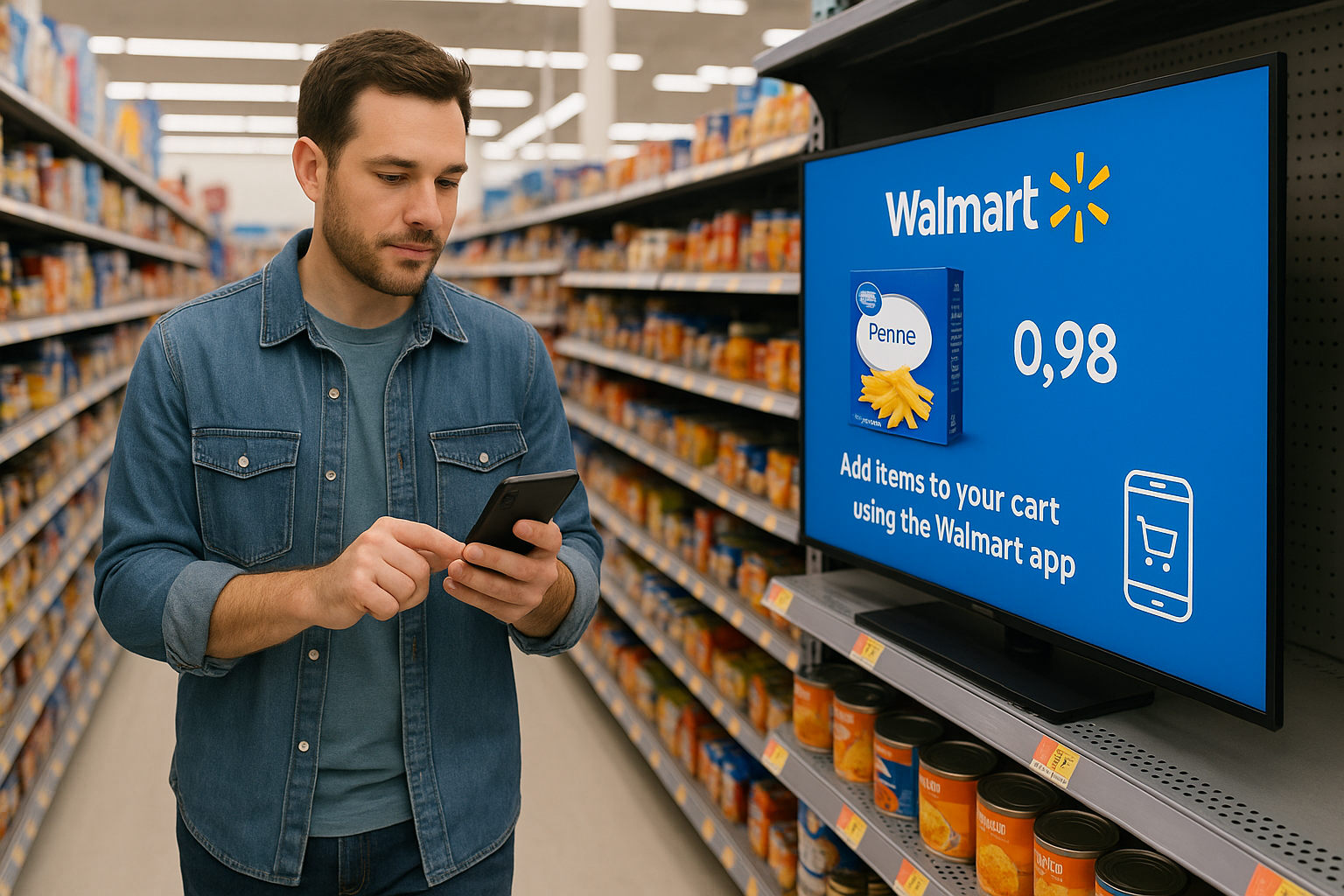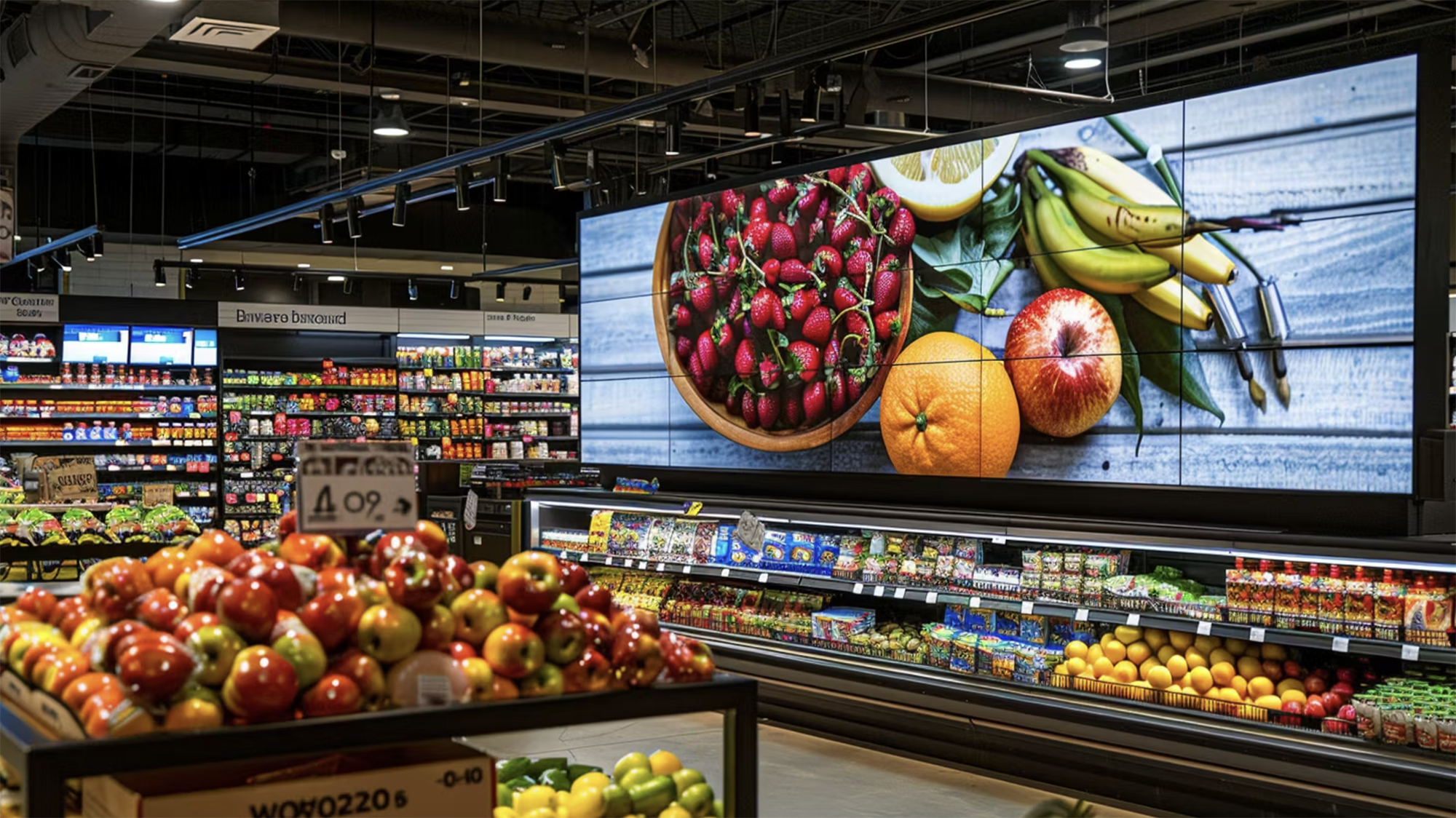Personalizing the Customer Experience: Insights from AI in Grocery's Second Annual Event
.png)
At a Glance
- Grocery Doppio’s second AI in Grocery virtual event explored consumer behavior, AI’s role, and advancements in digital technologies.
- The "State of AI in Grocery 2024" report revealed that 71% of grocery sales in early 2024 were digitally influenced.
- Emphasis on consumer-centric strategies, leveraging contextual data, and iterative testing to refine AI-driven recommendations.
- Spencer Price and Gene Tabach shared strategies for balancing technology with privacy and enhancing personalization in grocery shopping.
The Grocery Doppio’s second “Annual AI in Grocery Event” explored the dynamics of consumer behavior, the role of AI, and the evolving advancements in digital technologies. As consumer expectations shift towards more personalized and seamless shopping experiences, grocers are increasingly investing in AI to stay competitive.
According to the AI in Grocery report, 64% of grocers believe that customer experience improvements will present a $2.5 billion opportunity, with applications across customer self-service, call center associate enablement, and store associate enablement.
This article delves into the current state of grocery personalization, insights from Spencer Price of Halla-Wynshop and Gene Tabach, Senior Director of Data Science at Instacart, on balancing technology with privacy concerns, and the future directions for integrating AI into grocery operations. By exploring the challenges and opportunities in this evolving landscape, we aim to provide a comprehensive overview of how grocers can leverage technology to meet the demands of modern consumers.
Insights from Industry Leaders
Below are some quick insights shared by the panelists in their deep-dive discussion.
Spencer Price, VP Strategy, Halla- Wynshop works on grocery specific personalization solutions using the latest generative AI tools highlighting the grocery industry's transition from traditional approaches to digital ecosystems. Retailers can capitalize on technologies like electronic shelf labels, NFC, and QR code scanning to enhance customer connections and expand their online presence while engaging customers to discover a new and diverse range of products.
Customers who typically avoid online shopping can be enticed to explore digital platforms through mobile apps, providing access to valuable information and immersive experiences. He also emphasizes the significance of new and impulse purchases and the role of substitutions in enriching the customer journey. Facilitating the exploration of new products through online channels becomes crucial, especially given the reduced opportunities for in-store interactions with associates.
Gene Tabach, Senior Director of Data Science, Instacart supports a team of data scientists who work on improving Instagram's customer experience and optimizing their marketing and growth funnels. He highlights the importance of personalization within the context of private brands and the emergence of digital consumer cohort's millennials and centennials who are brand aware and value conscious. He emphasizes the need to meet customers where they are and cater to their preferences. In the past, private labels faced challenges in terms of price competitiveness, hindering their growth and quality. However, they have now experienced significant expansion and loyalty, especially among millennials and centennials, through value enhancement.
State of Grocery Personalization
What is the current state of grocery personalization, what are we doing right and wrong, and where do we go from here?
Tabach highlighted that the capability of big data powered by AI allows grocers to personalize the shopping experience for consumers. This includes tailoring marketing messages, recommendations, and promotions to provide a truly unique experience. Jean emphasized that AI and machine learning have significantly improved areas like search ranking, targeted incentives, and item ranking on e-commerce and digital websites, enhancing the overall online grocery shopping experience. Major players like Instacart and Amazon have been leading these efforts.
However, there is still substantial room for improvement, particularly in achieving user-level personalization. Unlike platforms like Facebook, Instagram, or Reddit, which deliver highly personalized content feeds, grocery apps typically offer mass-level personalization. This means they can suggest certain carousels, sets of items, or grocery stores that might be better for the user, but they lack the ability to deliver personalized outputs on an individual level as seen in other tech industries.He believes that while significant progress has been made, advancing towards user-level personalization remains a key area for improvement in the grocery industry.
Price highlights that the grocery industry excels at gathering vast amounts of data and using it to tailor recommendations and offers to individual shoppers. Retailers have successfully implemented loyalty programs for years, which increase customer engagement through cohort and segmentation-based approaches. However, these methods miss the true value of personalization, which lies in understanding each shopper on a one-to-one basis.
He mentions that achieving true personalization in grocery is challenging due to the highly nuanced and personal nature of food choices. Unlike other retail segments where preferences are more straightforward, food choices are influenced by a wide array of factors including the household you're shopping for, dietary restrictions, nutrition goals, cultural preferences, and even mood. The complexity of these factors and the need for highly specialized knowledge bases and modeling techniques focused on this space pose significant obstacles.
To illustrate this complexity, Price mentions that generalist AI models, even the latest large language models (LLMs), struggle to capture these nuances. For example, an orange can be seen as a flavor, color, product, or scent, and distinguishing between these contexts is crucial for creating highly personalized shopping journeys.
Balancing Privacy and Security Concerns
While we seem to have the tech to deliver that one-to-one experience, how do we balance this with the privacy and security concerns that a community must uphold?
Tabach addresses privacy concerns in two ways. Firstly, he emphasizes the importance of protecting user data collected by companies. Companies must ensure that user privacy is upheld by not selling their data to other providers and keeping sensitive information, such as shopping habits and financial details, secure. Many companies have invested heavily in privacy, especially since it became a major focus a few years ago.
Secondly, the balance between using data effectively for personalization and maintaining consumer trust. He mentions that some consumers might find highly personalized recommendations, such as suggesting they might be out of tomato sauce, a bit intrusive. This perception arises despite the fact that the recommendation is based on simple data models predicting usage patterns. He suggests that a general tech-wide consumer literacy discussion could help customers understand that such personalization are not invasive but rather based on minimal and straightforward data points.
To further elaborate, He likens respectful personalization to a scenario in a restaurant. Imagine a restaurant where staff know a regular customer by a number rather than a name and tailor their service based on observed preferences without collecting personal details. This approach highlights that effective personalization can be achieved without transacting in personal identifiable information (PII) or demographic data.
He also acknowledges the ongoing development in linking credit card data to customers in grocery stores, a practice already well-developed in other retail sectors. The aim is to create a holistic shopping experience by connecting in-store and online transaction data. For instance, knowing what items a customer bought in-store can prevent those items from being recommended again during their online shopping, thereby enhancing the overall customer experience. This integration of data helps create a seamless and less intrusive personalization process.
Suggested Action Plan for Personalizing Recommendations
Price emphasizes the importance of recommendations as a hallmark of a personalized experience and provides a structured approach to getting started. First, he suggests leveraging contextual data to understand the shopper's current context, such as the time of day, the composition of their cart, and their past purchases. This helps make recommendations that are timely and relevant. Secondly, he advises starting small by focusing on a few high-impact areas, such as homepage recommendations based on past purchases and order frequencies, and checkout recommendations like a “Did you forget?” section. Thirdly, he underscores the importance of iteration and learning, recommending the use of A/B testing to continually evaluate and refine recommendations, as what works today might need tweaking tomorrow.
Pitfalls - Overwhelming the customer with trade dollar-driven personalized ads, which are often intrusive, irrelevant, and unhelpful. He highlights the importance of not conflating genuine recommendations with such ads. Finally, he echoes the sentiment of keeping the customer at the forefront, advising against building products that merely reflect the company's internal organization rather than the customer's needs. He stresses the importance of holistically evaluating products to ensure that the AI-driven features make sense to consumers, enhancing their overall shopping experience
Insights on E-commerce
Tabcah highlights that digital commerce in the grocery sector requires a different approach compared to traditional in-store experiences. Many grocers initially try to replicate their successful in-store strategies online. While some in-store strategies are beneficial, shopping behavior online is fundamentally different. For example, online platforms can pair items together in ways that are not possible in a physical store, offering a unique and personalized experience.
In a physical store, every customer receives a similar shopping experience. However, the potential of e-commerce lies in creating a distinct, tailored store for each individual shopper. Although the industry has not fully realized this potential yet, it represents the direction in which e-commerce is heading. Gene emphasizes that this shift requires a significant change in mindset. Grocers, who have perfected their in-store operations over decades, may be hesitant to completely move away from these established methods. However, embracing this new perspective is crucial for optimizing the online shopping experience and meeting the evolving needs of consumers.
As the grocery landscape continues to evolve, staying attuned to customer demands and embracing technological advancements will be crucial for grocers to thrive. By leveraging AI and personalization technologies, grocers can enhance the shopping experience and meet the unique needs of each customer. Embracing these changes and continuing to innovate will help grocers stay competitive in a rapidly changing market. You can find the recording of the event for more insights here.


.png)



.png)
.png)



.png)


